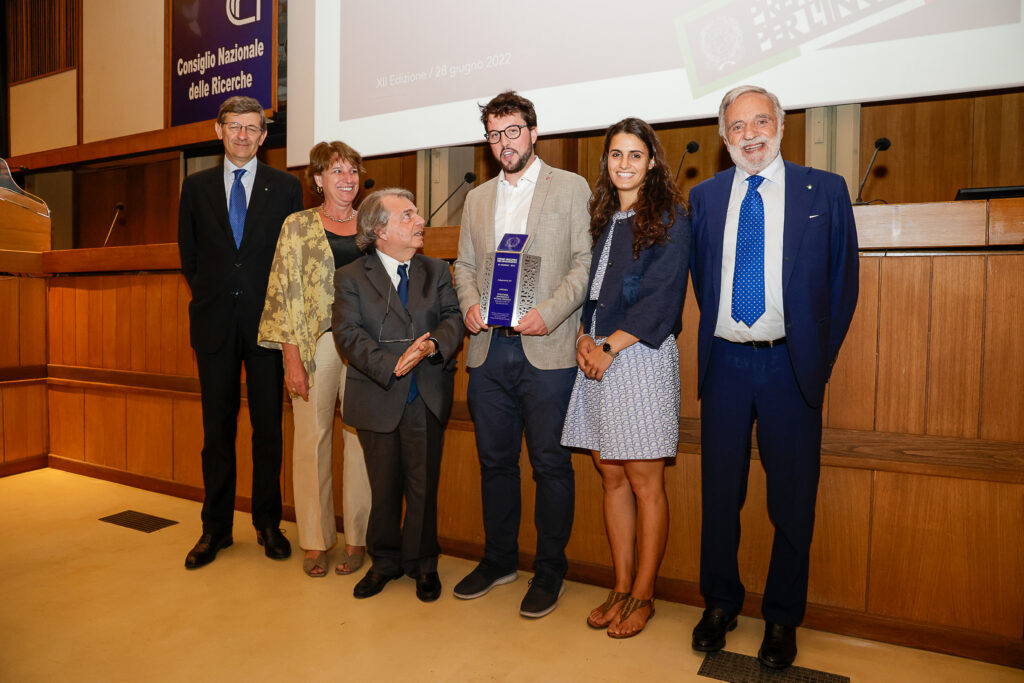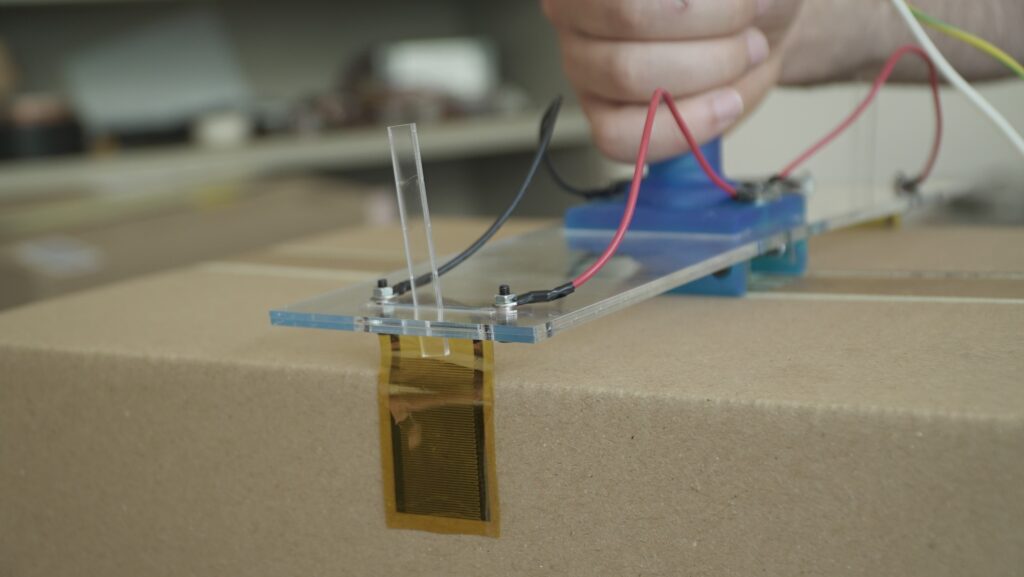Questa è la storia di due ingegneri e Alumni del Politecnico di Milano che sono diventati prima ricercatori e poi imprenditori. Camilla Conti ha studiato ingegneria energetica, Lorenzo Agostini ingegneria meccanica. Le loro strade si sono incrociate durante un semestre di scambio in Canada. Rientrati in Italia, si sono laureati e hanno scelto percorsi diversi: lei ha proseguito al Poli dopo un breve periodo in una multinazionale, prima con un dottorato in ing. energetica ed aerospaziale e adesso come ricercatrice post-doc, lui ha lavorato in azienda due anni prima di proseguire con un dottorato in emerging digital technologies alla scuola Superiore Sant’Anna di Pisa; successivamente è diventato ricercatore (Assistant Professor) all’Università di Bologna, dove ha svolto l’attività di ricerca su trasduttori elettro-meccanici basati sul fenomeno fisico dell’elettrostaticità nel contesto del laboratorio SAIMA (Sensori e Attuatori Innovativi per il Manifatturiero Avanzato) congiunto con l’Istituto STIIMA del Consiglio Nazionale delle Ricerche.
From this research, a new technology to produce adaptive mechatronic devices was born. In May 2022, Agostini and Conti, together with prof. Rocco Vertechy (UniBo), supervisor di post-doc di Agostini, hanno fondato una startup: Adaptronics, nata ufficialmente dopo un anno di lavoro sul business model, e basata sulle competenze maturate in quasi 10 anni di ricerca combinati.

Their invention makes use of the well-known principle of electro-adhesion: the same as when you rub a balloon on your hair and it sticks to it. “During my PhD,” Agostini explains, “I worked with a research group that dealt with the development of elastomer-based electro-mechanical transducers, i.e., systems that can be deformed like rubbers and which, when stimulated with electricity, produce a mechanical action. This technology can be used to create an artificial muscle that is as soft as a natural one but stiffens when stimulated electrically, for example”.
Adaptronics' innovation lies in having been able to evolve this technological basis to develop a special film made of polymeric materials, which allows an electro-adhesive effect to be controlled and obtained: the result is a film less than 0.5 mm thick, which becomes adhesive when activated electrically. It is capable of lifting up to 50 kg with two patches the size of credit cards (of course, the greater the size, the greater the force exerted), without having to use magnetic or pneumatic effects, and with a power consumption in the range of a few watts.

A kind of "electronic sensor fingertip, therefore, capable of detecting contact with any target object and moving it without exerting any pressure on it that could potentially damage it: it could become an enabling technology for many applications, the founders explain, from space to industrial logistics, goods transport and agriculture (imagine picking a raspberry without having to squeeze it...).
"I always wanted to be an entrepreneur," Agostini says, "and found my own company. I chose to study engineering and do my PhD because I wanted to be one of the first in the world to work with an emerging technology”. My dreams came true, and certainly not by rubbing a magic lamp. To validate this technology, the founders and their research team worked in the lab for several years. Once they had demonstrated how it worked and verified its industrial potential, the long process of technology transfer began (if you want to find out how to becomes an 'inventor', we talked about it on MAP 10).
"Before arriving at the final form of Adaptronics, we also presented other ideas that had similar core businesses and were based on the same technology. We participated in several start-up idea competitions, (we also won several, including the StartCup, the National Innovation Award in the Industrial category, the Talentis of Confindustria Young Entrepreneurs and the EIT Jumpstarter, Ed.) These experiences also offered training courses that were useful in helping us to identify the market segment on which to focus”.
Today, Adaptronics is a start-up in its early days, consisting of five partners: Conti, Agostini, the Università di Bologna (of which it is a spin-off), Prof. Rocco Vertechy (UniBo), Agostini's post-doc supervisor, and engr. Gavino Boringhieri, a long-time manager and start-up mentor. It addresses the market for automated robotic systems for efficient and sustainable logistics: industrial automation, last-mile delivery with autonomous robots, automated fruit picking, space debris removal and in-orbit services to satellites.

The two polytechnic entrepreneurs now focus on the internationalisation strategy to access new markets and also future funding rounds. "Now is the time to invest in training an operational team of mechanical, electronic and automation engineers to support us in product development. We are looking at Europe but also at the United States: both for the greater accessibility of investment capital and for the proximity to major space programmes. For us, that is a very important market since we are also involved in the aerospace sector, which currently has enormous growth potential and great interest from investors. We can be an 'enabling technology' for on-orbit operations, which is why we are incubated in Turin by the European Space Agency's Business Incubation Centre,” Agostini concludes.
"We want to become competitive in the world and we want to make a tool that can be a standard for the industrial automation of gripping and moving objects: if we focused only on Italy, we would soon be surpassed by any Asian or American company that can develop the same product whilst borrowing money from all over the world. Our plan, however, is to keep research and development in Italy, where there is certainly no scarcity of brains and excellence, and it just has to be given an opportunity to grow."